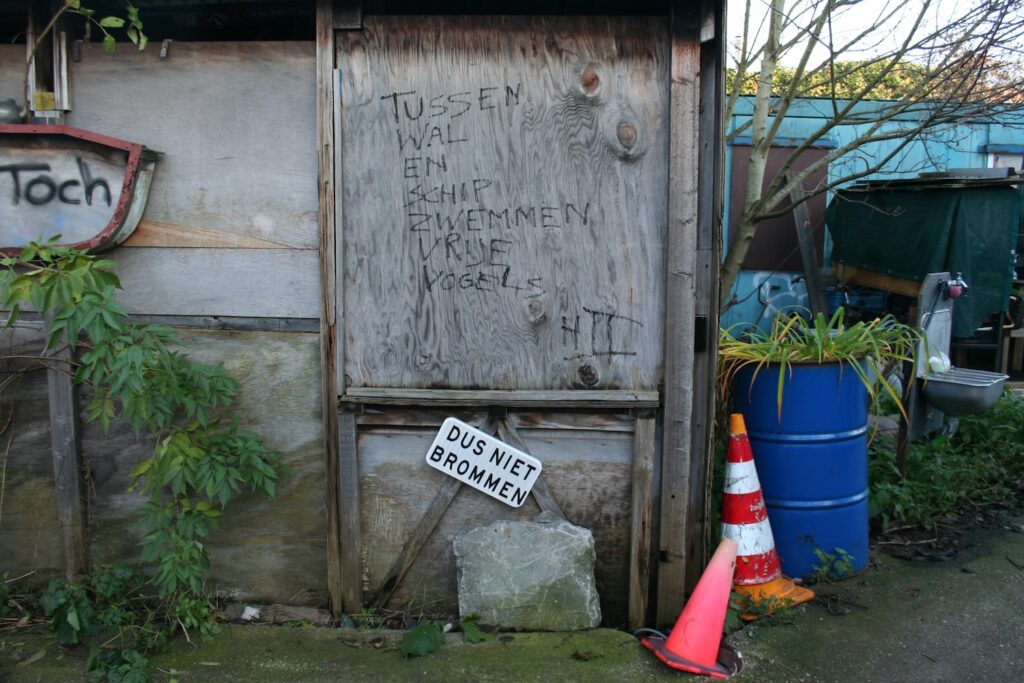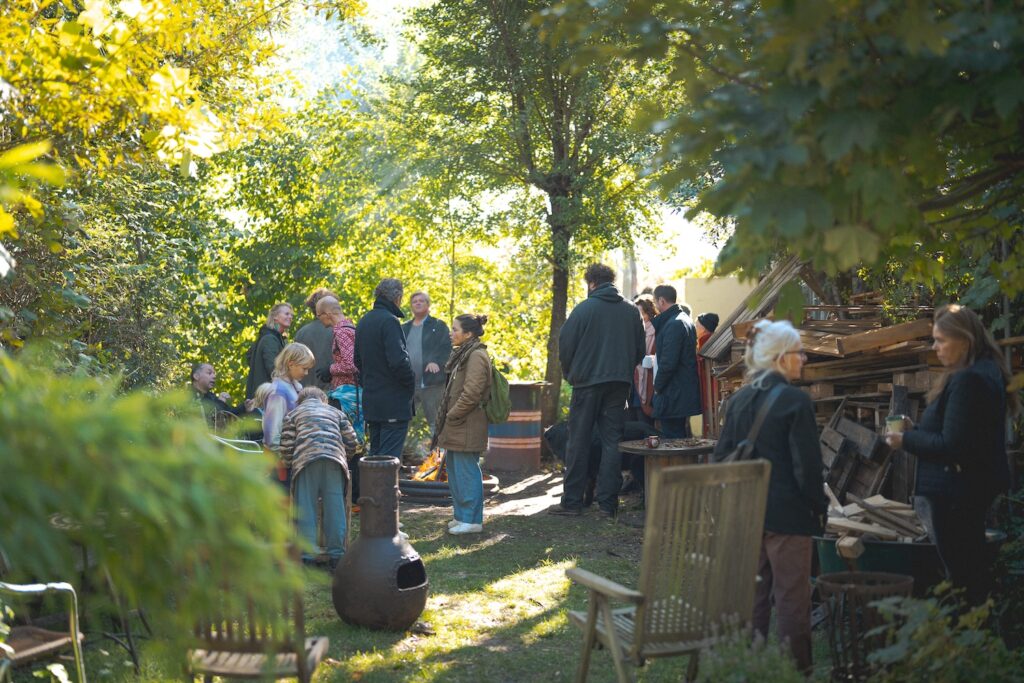NEB ambition
The ultimate ambition of the New European Bauhaus is to achieve transformation. To do this, the NEB Compass has identified specific levels of ambition that outline the desired outcomes for each of the NEB values.
The ultimate ambition of the New European Bauhaus is to achieve transformation. To do this, the NEB Compass has identified specific levels of ambition that outline the desired outcomes for each of the NEB values.
These areas refer to the five key domains of intervention that CrAFt's New European Bauhaus Impact Model considers essential for guiding and evaluating complex urban initiatives.
The participation level refers to the degree or extent to which individuals or groups are actively involved or engaged in a particular activity, project, or process. It assesses the depth of their involvement, contributions, and commitment, ranging from minimal or passive participation to active and dedicated participation.
The New European Bauhaus (NEB) aims to promote the values of sustainability, aesthetics, and inclusion in the design and transformation of urban spaces. It emphasises the integration of environmental, social, and economic considerations to create harmonious and innovative living environments.
According to the Smart City Guidance Package, there are seven stages to plan and implement smart city projects. These stages propose a logical and coherent roadmap for city initiatives involving many stakeholders.
This story's key learnings are:
Overall, Marijn's story offers insights into the intersection of art, urban development, community engagement, and the challenges inherent in balancing progress with the preservation of cultural heritage and community identity.
This story delves into the pilot Sluisbuurt of Sandbox City Amsterdam, a new city district in which the CrAFt project investigates the role of arts and culture in urban development. Amsterdam is growing rapidly, with 11.000 new residents each year. The city is building new urban residential environments at suitable locations to accommodate this influx in the coming years. One such place is the future Sluisbuurt in the east of the city, part of Zeerburgereiland.
As part of the CrAFt pilot, we interviewed artist Marijn van der Eyden and asked her to share her view on the development from an artist’s perspective. She is an artist in residence in the new creative space ‘Baggerbeest’ situated in a new neighbourhood in development.
Marijn knows this residential area in the city very well, as a resident and as a topic of her academic and artistic study. She started a bachelor in arts, and later a studies in mathematics where she followed a minor in architecture and urban planning. During this minor she started her research about the developments at Zeeburgereiland. In her artwork, she is reflecting on the transition of the Sluisbuurt and linking the pieces of arts, mathematics, architecture and urban planning.
In this interview with Marijn, we delve into the insights of her interdisciplinary journey and shed light on the process of capturing the stories of an urban area in transition through art, preparing itself for the city of the future.

Could you tell us a bit more about your work related to the Sluisbuurt area?
My journey culminated in obtaining a position as an Artist in Residence at Sluislab, a fieldlab hosted by InHolland University of Applied Sciences in which researchers and students explore the development of the neighbourhood in which the university will open its faculty in 2024.
In the framework of my exploration of the area, I engaged with fellow artists and residents, which resulted in a collaboration with a filmmaker. I sought to visually capture the dynamic stories unfolding in the new neighbourhood. Simultaneously, I began gathering materials from construction sites, immersing myself in the evolving landscape.
An intriguing moment occurred during my regular visits to the construction site. It struck me that this was the epicentre of the municipality’s development efforts. The information on the development of the area given by the municipality seemed not aligned with the experiences and perspectives of the residents, so it triggered me to conduct comprehensive research. However, instead of coming up with research questions myself, I preferred to let residents guide me, showcasing their surroundings and sharing their stories.
Through the artist-in-residence programme, I experienced that my knowledge based on theoretical studies was not sufficient to understand the complexity of the development. It was the conversations with residents that were of much value. This experience was particularly enlightening as it transitioned my understanding from theoretical studies to honest conversations with the people who make the island what it is.

How does your exploration of the area and the experience at Sluisbuurt resonate in your artwork?
With my artwork, I want to create a cabinet, creating a collective photobook of the living environment. I delved into the stories of the residents that formed the neighbourhood and were part of the cultural free space for artists that had been developed in the area for a long time, the Baaibuurt West. In the planning of the area, this cultural space will disappear and is being replaced by another temporary art space, Baggerbeest.
My growing fascination lies in preserving stories at risk of being lost, particularly within the area slated for demolition. Actively engaging with residents in this neighbourhood unveils the hidden narratives that require personal connection with the location. While exploring and making contact with these individuals, you start to truly grasp, feel, and experience the history embedded in the identity of the area.
The new neighbourhood is set to be a sustainable icon in the city. Before the start of the redevelopment, it was already a green oasis, as I could discover through film footage of one of the residents. This film material inspired me to start a collection of personal archive material that shows the connection of residents with their (green) environment.

Next to the archive of stories, I work on a patchwork. It is related to the archive, but it also visualises the history of this place. I wanted to endure how the island has slowly grown as a sludge storage. Initially, just water, the Oranjesluizen (locks) were built and connected the area to two dikes.
Around 1900, a third dike was built, creating a triangle that could be filled with sludge from the IJ river. And that’s how the triangular island that Zeeburgereiland currently is slowly came into being. Those map layers form the base of my patchwork – a construction sail, in which the blue faded sail represents water.
My patchwork is made from different local materials I found here, all kinds of canvases with their own layer. I create the patchwork together with residents. The co-creating takes place by sitting on both sides of the panel and literally passing the needle through the canvas. It is almost like a cradle screen, allowing you to share stories about the island, embroidering at the same time and demonstrating the common ground.
What impact do you hope to make with your artwork?
Archiving the history of the place is not just about the past but also about ensuring the story continues to resonate in the future. Even with the potential demolition of the cultural free space, Baaibuurt West, preserving this narrative is crucial. Still, with my archive, I hope to provide some memory and understanding of the importance of such places for the city.
I believe capturing the legacy through the archive and the patchwork helps. I experienced this as everyone, from urban planners to people who are developing this new neighbourhood, seems to feel a lot of warmth for the history of the free place. It is super interesting to bring new residents of the first realised housing estate in touch with the history of the place. I notice that people get more and more attached to the area the more they know about the past.

Besides my artwork, I also engage with the area as part of a collective that is developing an alternative vision for the area and is intervening with the development plans of the new neighbourhood. We want to contribute to the development of a green and creative neighbourhood that grows more organically from the history of the place. We urge for a development in which not everything will be demolished, but as much preserved as possible. We are really with a large group of active residents who are all committed to the neighbourhood developments. We have frequent meetings, and I think together, we can get quite a lot done.
Can Baggerbeest, as a new artistic space, continue the engagement of arts in the urban development of the area?
I am happy that the municipality recognises the importance of free cultural spaces by investing in the temporary cultural space Baggerbeest. However, I think that the development of housing and real estate tends to weigh more than the preservation of existing cultural spaces. It is a complex situation where recognition doesn’t necessarily translate into protection, given competing interests within the municipality.
The threat of losing the legacy of the identity of the local community is somehow connected to the opening of the new cultural space Baggerbeest. It’s a bit painful to see that an already established breeding ground cannot be retained, but a new one can be built. It is pretty crazy how contrasting elements coexist side by side.
On the map, you’ll find a cultural site less than 10 metres away from another. It then has to go away so that a new one may re-emerge – also serving as a regulated space for artists, ensuring they still have a place. With my artwork and together with the collective, I hope to provide the perseverance of the rich legacy of the old space for the development of the future and make the value of free spaces more broadly known.
Written by Melissa van der Lingen and Mareile Zuber
Photography by Marijn van der Eyden and Elvie Bech
Copy editing by Jose Rodriguez